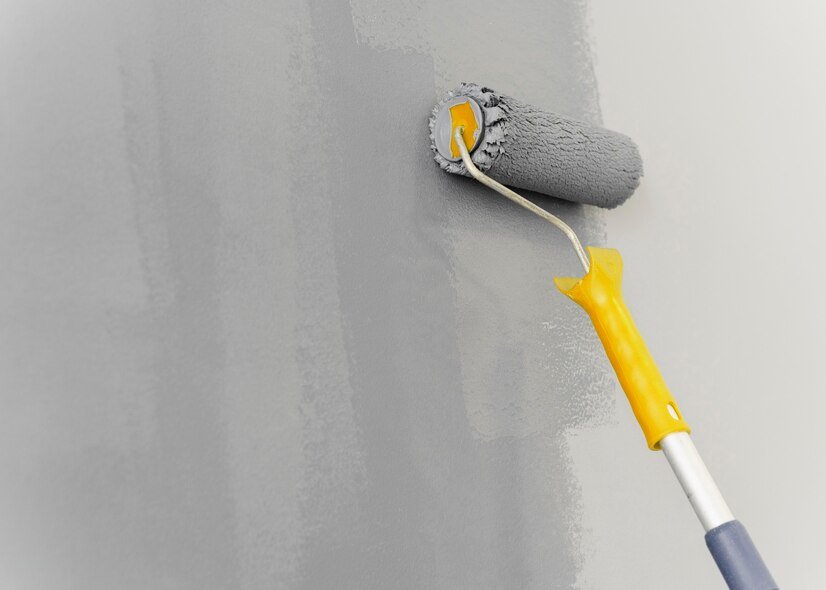Choosing the right colors for wall painting projects can transform a space and set the mood for your home or office. The color palette you select will influence the ambiance, lighting, and even the perception of space. When embarking on a wall painting, it’s crucial to consider factors such as the room’s purpose, natural light, and existing décor.
For instance, soft, light hues can make a small room feel more expansive, while bold colors add warmth and character. Testing paint samples on your walls before committing can ensure the chosen shade complements your vision. Understanding how color affects wall painting outcomes will help you create a space that reflects your style and enhances your environment.

Introduction to Color Selection
Selecting the right colors for wall painting projects is crucial in shaping the overall ambiance of your space. The colors you choose impact how a room feels and how well it complements your existing décor. Understanding the basics of color theory and its practical applications can simplify this decision.
Factors such as the room’s purpose, the lighting conditions, and your personal preferences are essential in finding the ideal hue. By considering these aspects, you can ensure the final result aligns with your vision and enhances your environment. This guide will cover key elements of color selection, helping you navigate the nuances of wall painting and achieve a visually appealing and functional result.
Understanding Color Psychology
Color psychology reveals how different hues can profoundly affect mood and perception within a room. For example, cool tones such as blues and greens are celebrated for their calming effects, making them ideal for bedrooms or relaxing spaces. On the other hand, warm colors like reds and oranges can infuse energy and warmth into social areas, such as living rooms and dining spaces.
By understanding these psychological impacts, you can select wall painting colors that enhance the ambiance and support the room’s intended function. This thoughtful approach helps create environments that foster well-being and reflect individual tastes. Using color psychology principles, you can design functional and aesthetically pleasing spaces.
Evaluating Room Lighting
The appearance of paint colors can vary greatly depending on a room’s lighting conditions. Both natural and artificial lighting and the direction from which light enters the room affect how colors are perceived. For example, a shade that looks one way in natural daylight may appear quite different under evening lighting or artificial light sources.
To select the correct color, you must test paint samples directly on your walls and observe them at different times of the day. This process helps you see how the color interacts with various lighting conditions and prevents unexpected results. By thoroughly evaluating how light affects your chosen hues, you ensure that your wall painting will maintain its intended look and functionality throughout the day.
Coordinating with Existing Décor
When selecting colors for wall painting, aligning with existing décor is crucial to achieve a harmonious and unified look. Start by examining the color palette of your furniture, flooring, and accessories. Utilizing a color wheel can assist in finding shades that either complement or contrast effectively with your current design elements. For example, if your furniture features earthy tones, choosing a paint color that blends with these hues will create a cohesive and visually appealing space.
Additionally, consider how the new paint color will interact with different textures and patterns within the room. This careful consideration ensures that your wall painting enhances rather than disrupts the overall design, reflecting your style while maintaining a seamless, stylish appearance.
Considering Room Size and Layout
When choosing colors for wall painting, the room’s size and layout are key factors in determining the best hues. The right color can significantly affect how the space feels and functions.
- Lighter Colors for Small Rooms: Soft, light shades can make a compact space appear more extensive and open, creating an illusion of spaciousness that enhances comfort and functionality.
- Darker Colors for Large Rooms: Deep, rich hues can add warmth and coziness to expansive areas, making them feel more intimate and visually inviting.
- Color Variations for Layout: Use different colors to define separate areas within open-plan spaces, adding structure and visual interest to the overall layout.
- Room Proportions and Color: Choosing colors that complement the room’s proportions can enhance its natural dimensions, making narrow rooms feel more comprehensive or high ceilings feel more balanced.
- Accent Walls for Focus: Incorporate bold colors on accent walls to draw attention and create focal points, adding depth and character to various room parts.
Exploring Color Trends
Staying updated on current color trends is a great way to choose stylish and modern wall painting colors. These trends often highlight the latest design innovations and offer valuable inspiration for your project. However, it’s essential to integrate these trends to align with your personal taste and the long-term vision for your space.
For example, while bold and vibrant colors may be popular, combining them with neutral tones can help maintain balance and prevent the space from feeling overwhelming. Blending trendy hues with classic elements allows you to create a contemporary look that remains appealing and relevant. Embracing trends thoughtfully ensures your space reflects current styles while fitting your unique preferences.
Using Color Samples and Swatches
Testing color samples and swatches on your walls is critical in choosing the right paint color. Paint colors can look significantly different in a store compared to how they appear on your walls due to variations in lighting and surrounding colors. Apply sample patches to large sections of your walls and observe them under various lighting conditions throughout the day.
This practice helps you see how the color interacts with your room’s lighting and other elements. Additionally, living with the samples for a few days can give you a better sense of how the color affects your space. This careful evaluation ensures that you make an informed decision and achieve the desired look for your wall painting project.
Balancing Bold and Neutral Colors
Combining bold and neutral colors in wall painting projects can create a visually engaging and balanced environment. Bold colors, such as vibrant reds or deep blues, infuse a space with personality and energy, making them ideal for creating focal points or accent walls. However, using a few bold hues can overwhelm a room. Pair bold colors with neutral tones like beige, gray, or white to achieve a harmonious look.
Neutral shades provide a calming contrast that prevents the space from feeling too intense, ensuring a balanced atmosphere. For instance, neutral-colored furniture and accessories can complement a striking accent wall, allowing the bold color to stand out while maintaining a cohesive and comfortable space. This approach helps achieve a design that is both eye-catching and inviting.
Understanding Finish Types and Their Effects
The finish type of paint affects your walls’ appearance and functionality. Matte finishes offer a non-reflective surface that hides imperfections but may be less durable in high-traffic areas. Satin and eggshell finishes provide a slight sheen and are more resistant to stains, making them suitable for various rooms. Glossy finishes create a reflective surface that can highlight architectural details but may require more maintenance.
Understanding these different finishes helps choose the right one based on the room’s usage and desired look. Consider factors such as durability, ease of cleaning, and how the finish complements your color choice. Selecting the appropriate finish ensures that your wall painting project meets aesthetic and practical needs.
Tips for Long-Term Color Satisfaction
Choosing colors that offer long-term satisfaction involves more than just following trends. Selecting timeless hues and planning carefully ensures your space remains stylish and enjoyable for years.
- Opt for Neutral Base Colors: Neutral shades provide a versatile backdrop that easily adapts to changing décor and styles, helping you avoid frequent repainting and maintaining a classic look.
- Incorporate Accent Colors: Use trendy or bold colors as accents rather than primary hues. This allows you to enjoy current trends without committing to them permanently, making updates easier.
- Test Paint Samples: Live with paint samples on your walls for a few days to see how they look in different lighting and with your existing décor before making a final decision.
- Consider Room Function: Choose colors based on the purpose of the room. Calming colors for bedrooms and energizing hues for social areas ensure the space supports its intended use effectively.
- Plan for Future Changes: Select colors that blend well with potential future updates to your décor. This flexibility helps you maintain a cohesive look without frequent changes.
Selecting the right colors for wall painting can significantly impact the feel and function of your space. You can make informed choices that transform your environment by considering factors like room lighting, existing décor, and color psychology. Testing samples and understanding different finishes will help ensure your paint job meets your expectations and stands the test of time. With thoughtful planning, you can create a space that effectively reflects your style and serves its purpose.
Ready to bring your wall painting project to life? Contact Full Coverage Painting for expert advice and exceptional results. Located at 600 Buckeye St., Vacaville, CA 95688, we’re here to help you choose the perfect colors and finishes for your space. Call or text us at 707-384-5108 to schedule your consultation today!







